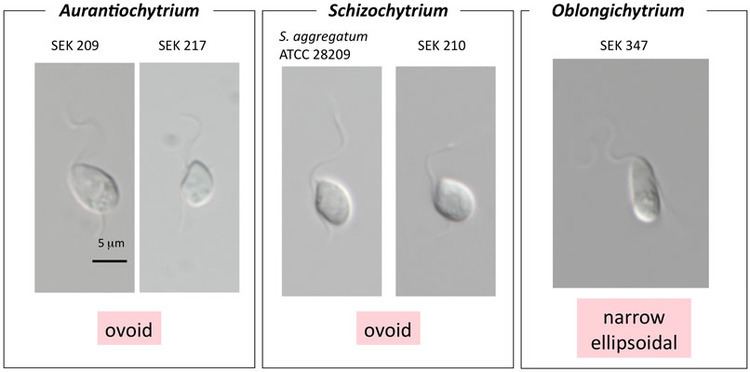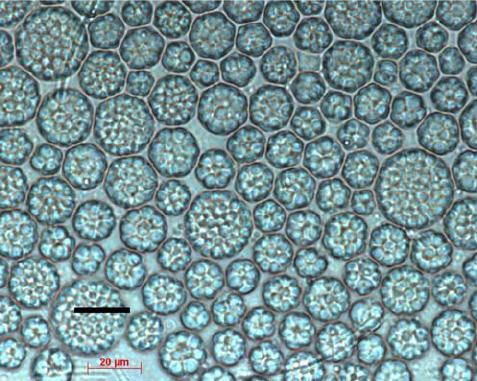Order Labyrinthulales | Family Thraustochytriaceae | |
Similar Labyrinthulomycetes, Crypthecodinium cohnii, Aurantiochytrium, Nannochloropsis, Mortierella | ||
Schizochytrium is a genus of unicellular eukaryotes in the family Thraustochytriaceae, which are found in coastal marine habitats. They are assigned to the Stramenopiles (heterokonts), a group which also contains kelp and various microalgae.
Contents

Lifecycle

Several stages occur in its lifecycle. The feeding form has a stiff, rounded body with cellular extensions used in feeding. Cells can transform into mobile flagellated cells with stiff tripartite hairs typical of the Stramenopiles. Cells can also grow and divide to form a cluster of cells which may become a sorus that produces biflagellated zoospores.
Relation to humans
Certain Species produce large amounts of docosahexaenoic acid and are grown commercially for production of this oil for animal feeds, biomass, and biofuels. In 2016, juvenile Nile tilapia were given a feed containing dried Schizochytrium in place of fish oil. When compared to a control group raised on regular feed, they exhibited higher weight gain and better feed conversion, and their flesh was higher in omega-3 fatty acids.


